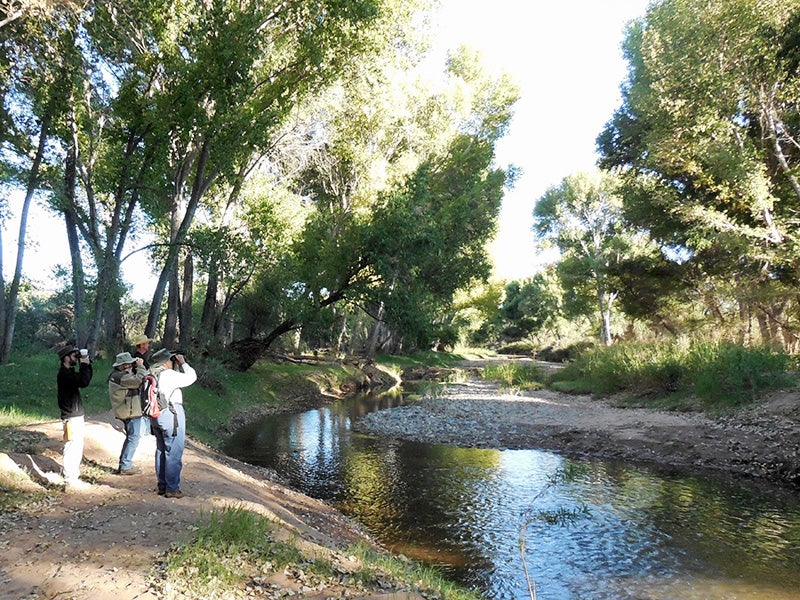The San Pedro River: A Lifesaving Oasis
The San Pedro River is a vital passageway for migratory birds, but the washes that feed its flow are in danger.

This page was published 9 years ago. Find the latest on Earthjustice’s work.
From the air, the San Pedro River looks like a green ribbon winding through the brown desert landscape east of Tucson, Arizona. For millions of birds, the river’s water and cottonwood and willow tree canopy are lifesavers during their migration. Nearly 45 percent of all North American bird species use the San Pedro at some point in their lives.
While the green trees are a striking visual contrast in the surrounding desert, the conduits that provide the river’s current aren’t so easy to spot. These desert “washes” often look like dry, unremarkable gravel thoroughfares far away from the river proper, but they hold life beneath.
“If you dug down inside some of them, you would find water,” says Tricia Gerrodette, an active member of the Audubon and Sierra Club groups near her home in Sierra Vista. During rains, water seeps through the washes into the aquifer, which helps to keep the San Pedro River flowing all year long.
Sadly, the unremarkable appearance of the dry washes has too often been their undoing. Developers fill in the washes and, in some cases, have turned them into cement ditches—removing important vegetation that helps hold precious rainwater and provides cover for desert wildlife. Developers are also withdrawing groundwater, thereby depleting the San Pedro River.
As a volunteer who helps monitor the San Pedro’s flow, Gerrodette is alarmed to see life diminishing in many of the local desert washes. She joined Earthjustice’s fight to strengthen clean water regulations after discovering that the Waters of the U.S. rule doesn’t sufficiently protect these washes, which serve as the lifeblood for rivers and other waterways.
“These arteries and veins that feed the big river are sort of invisible, but they are an important part of the circulatory system,” says Gerrodette. “Government regulators have just been ignoring them for way too long.”
The Waters of the U.S. blog series tells the stories of five courageous folks working to protect their beloved local waterways and to push the federal government to strengthen the EPA’s Clean Water Rule. Released in spring 2014, the rule is meant to bolster the 1972 Clean Water Act, which has been watered down over the years by concerted attacks from special interest groups. However, the Clean Water Rule exempts vital waterways, including some springs and desert washes, and Earthjustice—with help from grassroots water warriors—is fighting in courtrooms across the country to ensure that the rule is as protective as possible.